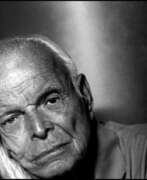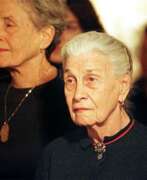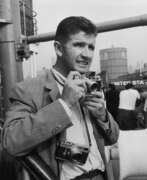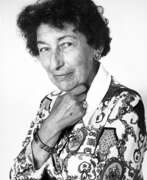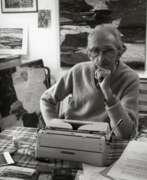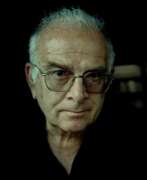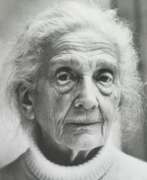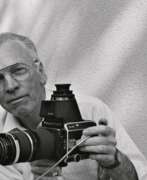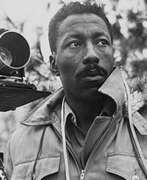Reportage Black & white photo
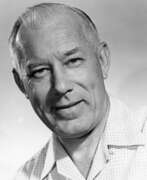

Ike Altgens, born James William Altgens, was an American photojournalist, photo editor and reporter for the Associated Press (AP).
After graduating from North Dallas High School, James joined the Associated Press, first as a reporter and in 1940 he was assigned to the photojournalism staff. He served in the U.S. Coast Guard during World War II and returned to the Associated Press in 1945 as a photographer, working as an editor and part-time actor and model.
On November 22, 1963, Altgens was assigned to photograph President John F. Kennedy during his visit to Dallas. And as fate would have it, he was able to take historic photos of the Kennedy assassination, which appeared in newspapers around the world the next day.
Altgens left the Associated Press in 1979, then worked on advertising for Ford Motor Company. On December 12, 1995, James Altgens and his wife were found dead in different rooms of their home in Dallas. According to the investigation, the cause of their deaths was carbon monoxide poisoning due to a faulty furnace.
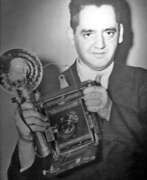

Arthur (Usher) Fellig, known by his pseudonym Weegee, was a photographer and photojournalist, known for his stark black and white street photography in New York City.
Weegee worked in Manhattan's Lower East Side as a press photographer during the 1930s and 1940s and developed his signature style by following the city's emergency services and documenting their activity. Much of his work depicted unflinchingly realistic scenes of urban life, crime, injury and death. Weegee published photographic books and also worked in cinema, initially making his own short films and later collaborating with film directors such as Jack Donohue and Stanley Kubrick.
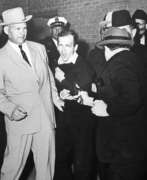

Robert Hill Jackson or Bob Jackson is a Pulitzer Prize-winning American photographer.
Robert attended Southern Methodist University while pursuing a passion for photography. While serving in the National Guard, Jackson became a photographer for an Army general. In 1960, he began working as a photo reporter for the Dallas Times Herald newspaper.
On November 22, 1963, Jackson was assigned to cover President John F. Kennedy's arrival at Love Field and his motorcade through the city. He witnessed Kennedy's assassination, but did not have time to film it. Two days later, however, he was able to photograph the shooting of Lee Harvey Oswald, the accused assassin of President Lee Harvey Oswald, by Jack Ruby in the garage of the Dallas police station. Robert Jackson was awarded the 1964 Pulitzer Prize in Photography for these photographs.
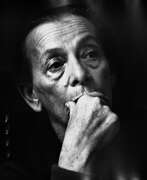

Stefan Moses was a German photographer living in Munich.
His documentary portraits of people and professions in West Germany (Germans) and later in East Germany (Farewell and Beginnings) made him accessible to a large audience. Moses took people out of their working environment and photographed them in front of a grey linen cloth — thus creating contemporary documents.
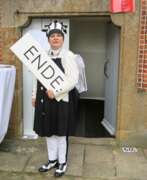

Carmen Oberst is a German artist, graphic designer and photographer.
She has lived in Hamburg since 1980 and works as an independent photographic artist, curator and teacher of design using photographic media.
Carmen Oberst originally worked as a graphic designer. Since 1997 she has been active in photography and experimental film, holding numerous exhibitions at home and abroad. Back in the 1980s, she developed her own visual language based on analog black and white photography and photoalchemical experiments. And in 1996 she founded PHOTO.KUNST.RAUM, a center for fine art photography and fine art known outside Hamburg.
Carmen Oberst turns the world into a stage: she routinely uses found events and randomly present people to create a fantastical production from the group of works "Rods of Imagination - On the Road" through the medium of photography.
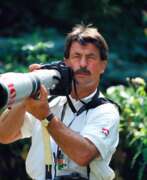

Rainer W. Schlegelmilch is a German motorsport photographer and photojournalist.
He studied at the Bavarian State College of Photography in Munich and already presented his work from motor racing at his graduation in 1962. Since then, this sport has been the main subject of Schlegelmilch's work. In 1964 he opened his own studio in Frankfurt for photo design and advertising photography.
The series of photographs of Formula One and FIA championships, which Schlegelmilch began in 1962, represent one of the most extensive collections of photographic material in the history of motor racing. His archive contains more than 600,000 images, which were black and white until 1970 and then color.
Schlegelmilch has published some 40 illustrated books on motorsport and calendars from various racing series, and has participated in exhibitions around the world. For his unique skill he is called "the eye of Formula 1", and Bernie Ecclestone many years ago gave him a press pass valid until the end of his life. Brands such as Ferrari, Porsche, BMW, Mercedes and Aston Martin have used his work for luxury publications.


Dayanita Singh is an Indian photographer whose primary format is the book. She has published fourteen books.
Singh's art reflects and expands on the ways in which people relate to photographic images. Her later works, drawn from her extensive photographic oeuvre, are a series of mobile museums allowing her images to be endlessly edited, sequenced, archived and displayed. Stemming from her interest in the archive, the museums present her photographs as interconnected bodies of work that are full of both poetic and narrative possibilities.
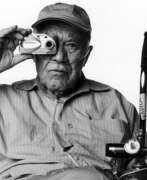

Philip "Snapdragon" Stern was an American photographer noted for his iconic portraits of Hollywood stars, as well as his war photography while serving as a U.S. Army Ranger with "Darby's Rangers" during the North African and Italian campaigns in World War II.
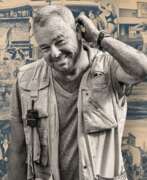

David Yarrow is a British photographer, conservationist and writer.
At the beginning of his career Yarrow photographed sports stars, at the age of only 20 he took the iconic picture of soccer player Diego Maradona, but then he found his niche. David Yarrow reinvented wildlife photography with his extraordinary patience and, most importantly, his reverence for it. Yarrow's black-and-white wildlife photographs with stars such as Cindy Crawford and Cara Delevingne have brought him ever-growing popularity among collectors. Today he is the best-selling photographic artist in the world.
Yarrow is also active in his charity work for the protection of wildlife.
